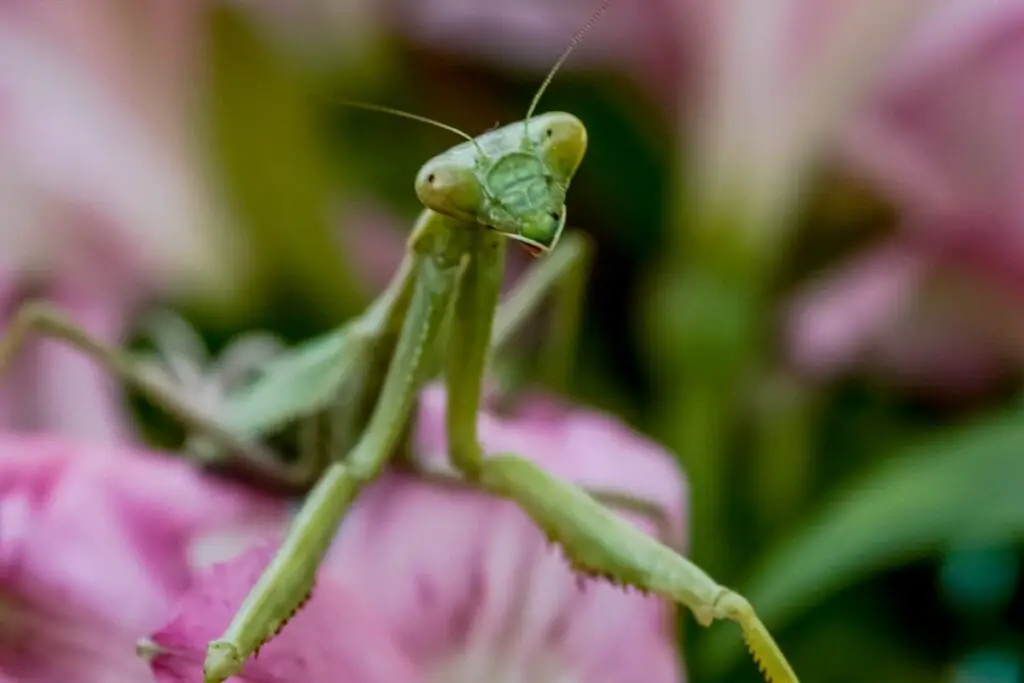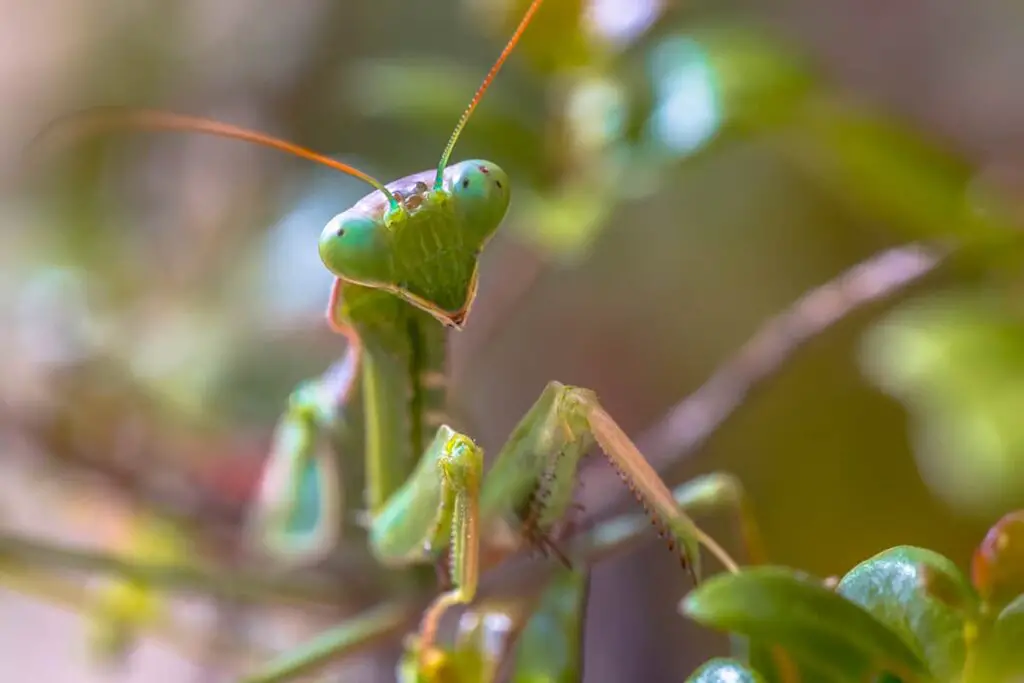Maintaining optimal humidity in a praying mantis habitat is crucial for the health and well-being of your pet mantis. These intriguing insects thrive in environments that mimic their natural conditions, which usually include adequate humidity levels. If you’re a praying mantis enthusiast, you know that these delicate creatures require a balance of moist air to facilitate molting and prevent dehydration, yet not so much as to encourage the growth of bacteria and mold. Achieving this balance in your mantis habitat can be a fun and rewarding element of their care.
You’ll want to consider the type of enclosure you’re using and its ability to retain moisture, as well as the tools at your disposal to measure and adjust humidity. Adequate ventilation is important to prevent stagnant conditions, but you’ll also need to ensure the enclosure doesn’t become too dry. It’s a balancing act that you can manage with some attention and knowledge about your mantis’s specific needs.
By providing a habitat with the correct humidity levels, you’re setting the stage for your mantis to exhibit natural behaviors, grow healthily, and live comfortably. Using substrates that retain moisture, like coconut husk, and monitoring tools such as thermometers and hygrometers, are steps in the right direction. You’ll be rewarded with the sight of your mantis thriving in an environment that you’ve carefully curated for its health.
Understanding Humidity Requirements
Creating a proper environment for your mantis means paying attention to the humidity levels within their habitat. This is crucial for their health and well-being.
Species-Specific Humidity Needs
-
Tropical Species: These mantises often require higher humidity levels, 70-90%, as they are adapted to rainforest environments.
-
Desert Species: Contrarily, they thrive in lower humidity conditions, around 30-50%, reflecting their arid natural habitats.
It’s essential to research your specific species’ needs. For instance, a European Mantis will have different humidity requirements than an African Mantis.
Signs of Improper Humidity
Improper humidity levels can lead to:
-
Difficulty Molting: A sign your mantis might be struggling is if they have issues during their molting process.
-
Dehydration or Overhydration: Too little humidity can cause dehydration, while too much can lead to fungal growths and other health issues.
Monitoring humidity using a hygrometer will help you maintain the correct levels for your praying mantis.
Creating the Ideal Humidity Environment
Maintaining proper humidity is vital for your mantis to thrive. Let’s make sure you’re equipped to create the perfect humid habitat.
Choosing the Right Enclosure
Selecting an enclosure that can maintain stable humidity is crucial. Glass tanks are excellent for retaining heat and humidity, aiding in the creation of a comfortable environment for your mantis. It’s important that the enclosure also allows for sufficient airflow to prevent condensation and mold growth.
Misting Systems and Humidifiers
A regular misting routine helps to simulate the natural dew your mantis would encounter in the wild. Automated misting systems can be invaluable for this, providing consistent moisture without making the habitat too wet. Alternatively, a small humidifier can also help maintain the desired humidity levels.
Monitoring with Hygrometers
Keeping track of humidity is made easy with the use of a hygrometer. It’s a small investment that gives you precise control by providing real-time readings of the humidity within your mantis habitat. Regular checks will help you adjust your misting or humidifier output as necessary.
Maintaining Humidity Levels
Proper humidity is critical for your mantis’s health, particularly for molting. Let’s optimize your habitat to ensure your mantis thrives.
Regular Habitat Maintenance
To maintain proper humidity in your mantis habitat, you must regularly check and adjust environmental conditions. Ensure that the enclosure is well-sealed; any cracks or gaps can lead to humidity loss. Regularly clean the enclosure to prevent mold growth, which can occur in high humidity environments. A hygrometer can help you track the humidity levels, which vary based on species needs—from low for desert species to high for those from rainforest regions.
Water and Misting Schedule
Implementing a consistent water and misting schedule will help manage the humidity. Misting the enclosure with water—preferably in the morning and evening—can simulate natural dew and maintain adequate moisture levels. The substrate can also be a key factor; for example, organic soil, peat moss, and leaf litter can help retain moisture. Remember, the frequency and quantity of misting may change with the seasons and type of mantis habitat you have.
Frequently Asked Questions
Maintaining the right humidity in your praying mantis habitat is crucial for their health and successful molting. Here’s how you can achieve the ideal conditions for your pet.
How can I maintain the correct humidity level for my praying mantis habitat?
To maintain correct humidity levels, regularly mist the enclosure with water, and include live plants or a moist substrate. Ventilation should be balanced to prevent stagnant air, which can be achieved by having ventilation areas on opposite sides of the habitat.
What methods are effective for keeping my mantis enclosure humid?
Effective methods include using a misting system to provide periodic moisture and adding a shallow water dish to increase the enclosure’s humidity through evaporation. Misting the enclosure manually with a spray bottle can also keep the humidity at desired levels.
At what humidity level do praying mantis eggs thrive best?
Praying mantis eggs, or oothecae, typically thrive best in humidity levels around 70% to 90%, depending on the species. Proper humidity is essential for preventing the eggs from drying out and ensuring successful hatching.
How do you ensure proper hydration for a praying mantis in captivity?
Ensure proper hydration by misting the enclosure regularly, as mantises drink water droplets from surfaces and foliage. Additionally, maintaining a humid environment helps prevent dehydration.
What are the humidity requirements for a Chinese mantis in an enclosure?
A Chinese mantis in an enclosure requires a humidity range of 50% to 70%. This level of humidity supports their natural habitat conditions and promotes healthy growth and molting.
Can altering the humidity affect the molting process of a praying mantis?
Altering the humidity can significantly affect the molting process. Low humidity levels can lead to molting issues, such as stuck exoskeletons, while high humidity helps in the smooth shedding of the old exoskeleton. It’s essential to monitor and maintain the recommended humidity levels for your specific mantis species to ensure their well-being during molting.
Driven by a passion for those tiny creatures that rule our world, we at Bug Domain strive to be your go-to resource for information on insects.




